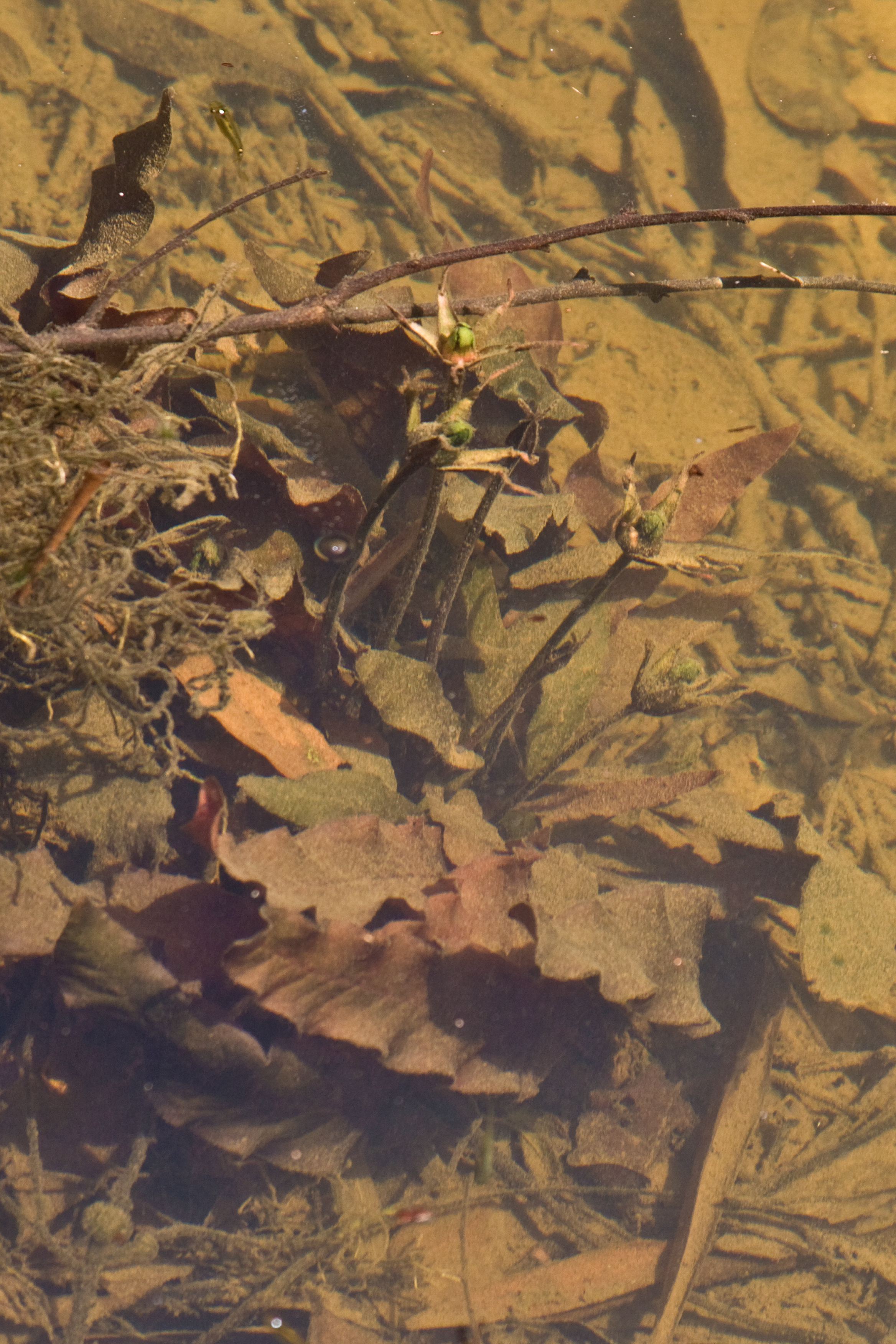Photos by author unless otherwise noted
This article was originally published in The Aquatic Gardeners Association Magazine.
Barclaya longifolia is an unusual member of the water lily family. It is unusual in several aspects. Unlike most water lilies, which have rounded, floating leaves and flowers, Barclaya longifolia has long narrow leaves and grows completely underwater… It even flowers under water! And it is one of a very small number of plants that can successfully germinate and produce seeds entirely under water.
This species is native to southern Asia, and my experience with it in the wild has been in southern Thailand where it is relatively common in fast flowing clear, soft water streams. It is typically found in loamy substrates, though depending on the time of year, a layer of leaves can build up on top of the loam in areas where the current has slowed. The plants are occasionally found in areas that would get sun for most of the day, but it is also common in fairly deeply forested areas, where it only receives direct sun for a short period, and is shaded the majority of the day.
The author, with a beautiful Barclaya longifolia from a typical loamy stream in southern Thailand. This type has a green upper leaf and is magenta pink underneath.
Barclaya longifolia among tree roots in southern Thailand.
As mentioned above, the plants flower entirely under water, and the flowers are self-fertile and readily set seed. When the seed pod opens, the seeds are released in a jelly-like mass, and are distributed downstream. In some cases, you can find the seedlings growing in a thick mass where the seeds have gotten snagged in among tree roots. Other times, the seeds settle out singly, in mid-stream, and as a result individual plants can be found along the water way. It is common to find Cryptocoryne cordata growing in the same streams as Barclaya longifolia, sometimes the two species even mingle together.
Barclay longifolia flowering, totally submersed, near the banks of a stream in southern Thailand.
A large number of Barclaya seedlings have been snagged in the roots of a tree.
As the Barclaya seedlings grow into adult plants, they also grow a large bulb-like storage organ that can support the plant during difficult growing times. We occasionally found plants in very shallow water as the stream level dropped in the dry season, so it is possible that this bulb can sustain the plant through dry periods. It is also likely that the leaves are ripped off the plants in flood water periods during the rainy season, leaving the plants unable to photosynthesize in the deep, muddy flood water. This storage organ would be useful in those conditions also.
This plant is almost high and dry as the water level recedes at the start of the dry season.
Barclaya longifolia is a commendable aquarium plant. In the past, it has sometimes been difficult to find good bulbs. Many times, people would buy bulbs that never sprouted, leading them to think this is a difficult plant. It really isn’t if you start with healthy stock. The good news is that the plant is now in tissue culture, so it is much easier to get healthy plants. The bad news is that of course baby, tissue culture plants do not have a bulb yet. That means that they will depend entirely on the aquarist to provide them adequate nutrition, until, over time, they build a bulb. This plant does very well in moderate light, and grows best with supplemental CO2, though it is not entirely necessary.
There are several color varieties. The one I like best has a satiny green upper leaf with a pale pink below. Unfortunately, this seems to have fallen out of favor, and the deep red type has become the common type in aquarium cultivation. But this is a lovely plant too, especially if you want a stunning red center piece plant.
The red form of B. longifolia flowering in the aquarium. Photo - Mark Crow
Occasionally, I have heard of Barclaya longifolia going dormant in the aquarium. They do not require a “rest period outside the tank. If this happens, simply leave them alone, and as long as they have been well fed before dormancy, the plants should sprout again when they are ready.
One of the fun aspects of Barclaya longifolia is its ability and willingness to flower in the aquarium. By water lily standards, the flowers are very modest, but it is still fun to see any plant flower under water. Leave the flowers alone and seed will set. I normally just allow the seed to disburse around the aquarium. Over a period of months, you will find baby Barclaya plants growing up in unexpected places. When they get big enough, you can move them wherever you want. If you want to maximize production, you can try to capture the seed in fish net material tied gently around the stem of the flower. Once the seeds have matured, and the seed pod has ruptured, you can sow the seed in good substrate in a shallow tank, filling the tank deeper as the plantlets grow. If you are involved in the HAP program in your local club, this is a great plant to use for sexual propagation. It is one of the easiest to reproduce via seed on you hunt for your Master Gardeners Award!






